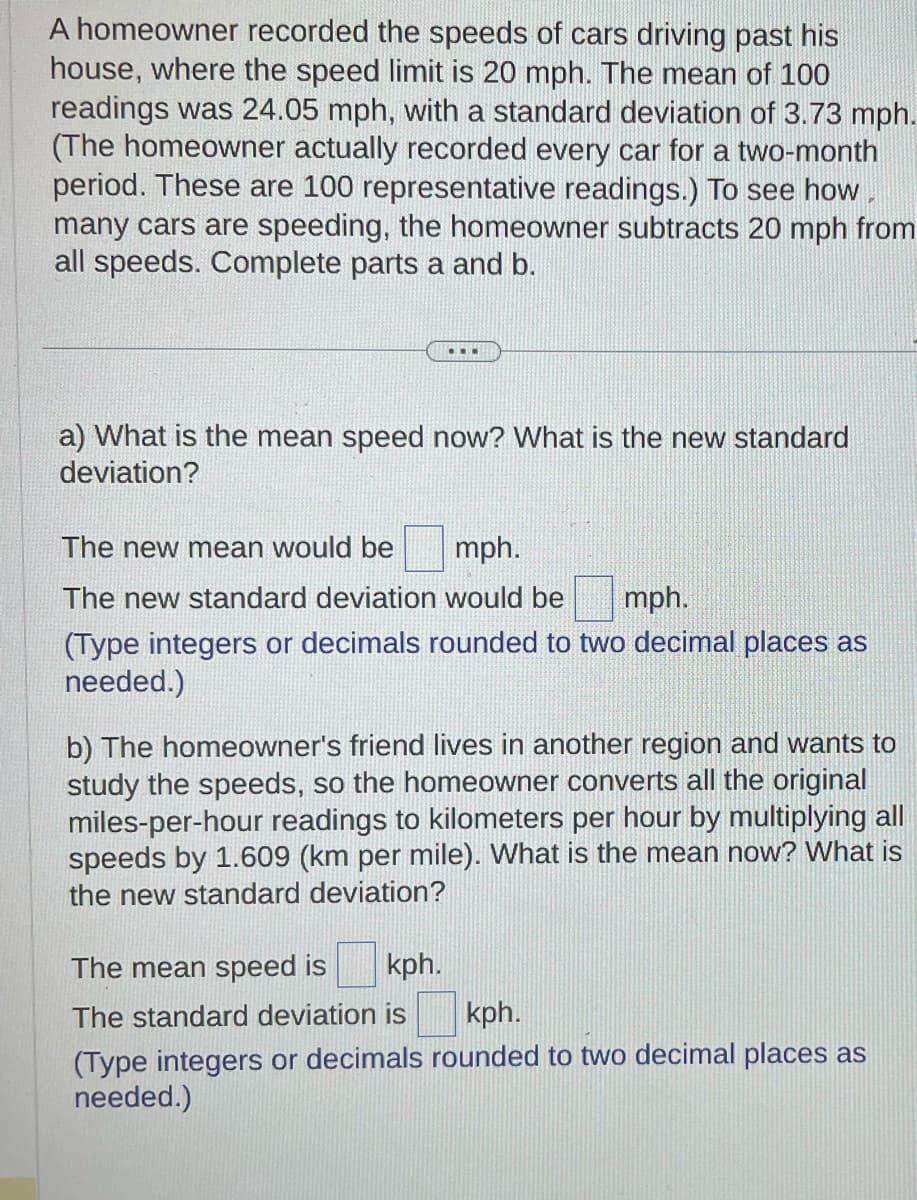a) What is the mean speed now? What is the new standard deviation? The new mean would be mph. The new standard deviation would be mph. (Type integers or decimals rounded to two decimal places as needed.) b) The homeowner's friend lives in another region and wants to study the speeds, so the homeowner converts all the original miles-per-hour readings to kilometers per hour by multiplying all speeds by 1.609 (km per mile). What is the mean now? What is the new standard deviation?
a) What is the mean speed now? What is the new standard deviation? The new mean would be mph. The new standard deviation would be mph. (Type integers or decimals rounded to two decimal places as needed.) b) The homeowner's friend lives in another region and wants to study the speeds, so the homeowner converts all the original miles-per-hour readings to kilometers per hour by multiplying all speeds by 1.609 (km per mile). What is the mean now? What is the new standard deviation?
Glencoe Algebra 1, Student Edition, 9780079039897, 0079039898, 2018
18th Edition
ISBN:9780079039897
Author:Carter
Publisher:Carter
Chapter10: Statistics
Section10.5: Comparing Sets Of Data
Problem 13PPS
Related questions
Question

Transcribed Image Text:A homeowner recorded the speeds of cars driving past his
house, where the speed limit 20 mph. The mean of 100
readings was 24.05 mph, with a standard deviation of 3.73 mph.
(The homeowner actually recorded every car for a two-month
period. These are 100 representative readings.) To see how.
many cars are speeding, the homeowner subtracts 20 mph from
all speeds. Complete parts a and b.
...
a) What is the mean speed now? What is the new standard
deviation?
The new mean would be mph.
The new standard deviation would be
mph.
(Type integers or decimals rounded to two decimal places as
needed.)
b) The homeowner's friend lives in another region and wants to
study the speeds, so the homeowner converts all the original
miles-per-hour readings to kilometers per hour by multiplying all
speeds by 1.609 (km per mile). What is the mean now? What is
the new standard deviation?
The mean speed is kph.
The standard deviation is
kph.
(Type integers or decimals rounded to two decimal places as
needed.)
Expert Solution
This question has been solved!
Explore an expertly crafted, step-by-step solution for a thorough understanding of key concepts.
This is a popular solution!
Trending now
This is a popular solution!
Step by step
Solved in 3 steps with 3 images

Recommended textbooks for you

Glencoe Algebra 1, Student Edition, 9780079039897…
Algebra
ISBN:
9780079039897
Author:
Carter
Publisher:
McGraw Hill

Glencoe Algebra 1, Student Edition, 9780079039897…
Algebra
ISBN:
9780079039897
Author:
Carter
Publisher:
McGraw Hill